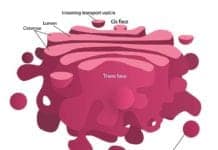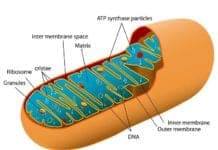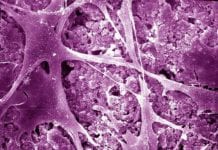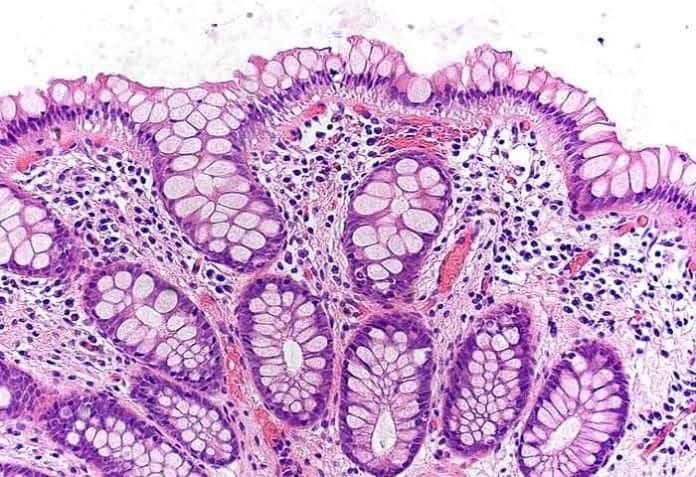
Goblet Cells: In the body, different organs are responsible for maintaining homeostasis. For instance the first line of cells contributing for such is found in the epithelium.
Table of Contents
These cells, mostly composed of secretory cells employ a so-called “mucosal barrier” that serves as a lubricant and aids in the preservation of the epithelium. In particular, cells known as goblet cells are an important component in this barrier and constitute the majority of the immune system. But they are more than just secretory cells.
In the last article, we looked at the Kupffer Cells in liver and now we’ll explore the Goblet cells in this article.
How to pronounce Goblet Cells?
| [responsivevoice buttontext=”Goblet Cells”][/responsivevoice] | Word Origin: Celtic, Middle-English |
![]()
What are Goblet Cells?
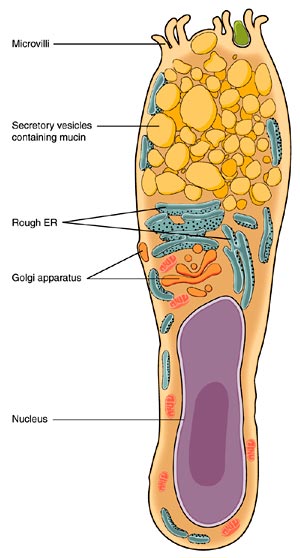
But regardless whether they accumulate mucus or not, the shape of goblet cells[2] are dependent on their age. Young cells are rounded but increase in size and flatten as they age.
- Goblets cells have a very prominent morphology; having the nucleus, mitochondria, Golgi body, and the endoplasmic reticulum at the basal portion of the cell. The rest of the cell is filled with mucus in secretory granules.
- When fixed, these cells appear to have a narrow base and expanded apical portion that extends up to the lumen.
Where are Goblet Cells Found?
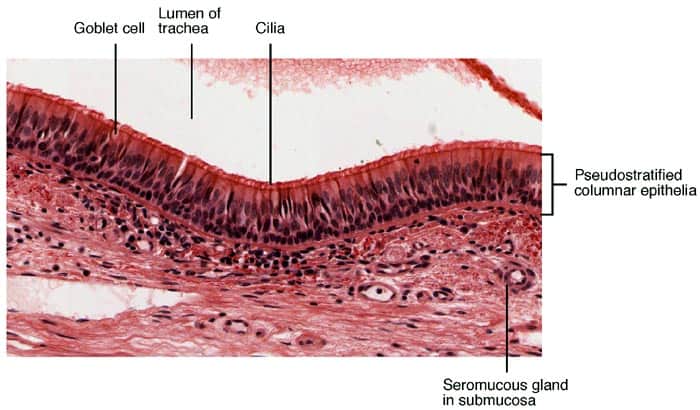
Origin & Development of Goble Cells
Goblet cells along with other principal cells in the gastrointestinal tract, (i.e. enteroendocrine cells, enterocytes, and Paneth cells), emerge from the multipotent cells (PDF) (cells that can give rise to different cell types) in the base of the Crypts of Lieberkühn.
- In humans, these in general appear during the fetal development of the small intestine at the 9th to 10th weeks gestation.
- The overall morphology of these cells is created by the distended theca, the sheath of cells that covers the structure, that contains mucin granules found below the apical membrane.
Functions of Goblet Cells
Apart from comprising the epithelial lining of various organs, production of large glycoproteins and carbohydrates, the most important function of goblet cells is mucus secretion. This mucus is a gel-like substance that is composed mainly of mucins, glycoproteins, and carbohydrates.
The following are the functions of mucus.
1. Secretion in the small and large intestine
- These mucins help neutralize the acids produced by the stomach. They also help in lubricating the epithelium for the easier passage of food.
- Although the production of mucus is the main function of them, a recent study published in the journal Mucosal Immunology[5] have shown that goblet cells in the small intestine can accumulate and uptake antigens (toxins that induces an immune response).
- In the large intestine, the formed mucus blanket/barrier[6] inhibits inflammation by preventing the passage of luminal bacteria and food-derived antigens from passing through it. Such phenomenon is called as the oral tolerance.
![]()
2. Secretion in the respiratory tract
- A study published in the journal European Respiration Journal[7] revealed that the mucins produced by the goblet cells are responsible for the trapping and transport of the inhaled foreign bodies (i.e. allergens, particles, and microorganisms).
- Aside from that, this study also showed that goblet cells can even produce more mucus than any other glands in the body.
![]()
3. Secretion in the conjunctiva
- Organs, like the conjunctiva, that come in contact with the exterior environment are lined with goblet cells that function for lubrication (along with the secretion of tears) against foreign debris and agents.
![]()
How Do They Secrete Mucus?
As mentioned earlier, goblet cells secrete mucus through merocrine secretion, which in turn serves a variety of functions. But in the first place, how do these cells secrete such powerful substance?
The secretion of mucus[3] is preceded by a stimuli. Along with the secretory granules, they secrete the mucus via exocytosis (process where the contents of the vacuole is released).
- When inside the goblet cell, the mucus is initially in a condensed state. However when it gets released, it dramatically and instantaneously expands.
- This is apparently true because according to studies, the mucin gel in goblet cells can expand up to 500 times its original volume in just 20 milliseconds!
![]()
Diseases Associated With Goblet Cells
Because they can serve as progenitor (can give rise to) other cells, they can also be a good indicator of the condition of their neighboring cells, tissues, or organs.
- According to some studies[8], goblet cells are associated with diseases in the respiratory tract like cystic fibrosis and chronic bronchitis.
- In these type of diseases, they can either undergo metaplasia ( change to other type of cells) or hyperplasia (abnormal increase of number).
![]()
While goblet cells can perform functions that are beneficial to an organism, too much proliferation of it is not good either. When both goblet cells and neuroendocrine cells are produced, tumors called goblet cell carcinoids may arise.
This tumor occurs in the appendix and may even require removing the said organ when the situation gets worse.
In general, goblet cells and the mucus they produce have long been poorly studied and appreciated. Many other important questions about these cells remain.
Hence more detailed studies are required to further understand the functions of this cell in the mucosal biology and its overall contribution in the immunology and homeostasis of the intestinal tract. Such knowledge will also be vital in designing novel therapeutic techniques for numerous diseases.




